Core Facilities News - February 2024 - Regenerative Medicine Staff Highlight

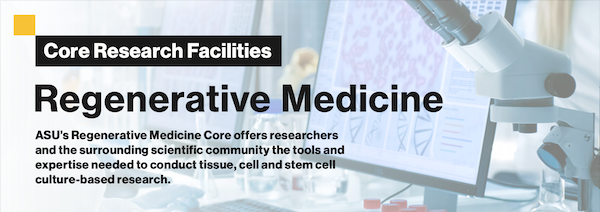
Welcome to the ASU Core Facilities Newsletter. We are ready to support all your research goals. Please follow our LinkedIn page for additional resources and community information.
Regenerative Medicine Core Showcase
For this month's newsletter, we're going to focus on the people that make our Regenerative Medicine Core so great! Part of our larger Biosciences Core, the "Regen Med" facilities offer an extensive range of cell culture instruments, support and services.
The Regenerative Medicine Core houses the Histology, Flow Cytometry and Advanced Light Microscopy Cores, which makes it a comprehensive suite for medical research. The Core is equipped with state-of-the-art tools to support a wide array of research activities.

The Regenerative Medicine Core Facility at Arizona State University combines expertise on cellular and molecular biology, with the combination of microscopy, histology and flow cytometry.
The Regenerative Medicine Core facilitates research by offering training in cell and stem cell culture, nucleic acid analysis, biomolecule spectral analysis and techniques for preparing cells and tissues for analysis and sorting.
Regen Med provides advanced resources for cell and tissue imaging, including fully automated stations for tissue processing, sectioning, and staining, as well as sophisticated microscopes designed for both live and fixed sample imaging. This includes high-resolution microscopy, whole slide imaging capabilities, and comprehensive software packages for the analysis of complex images.
Meet the Regen Med team




Solange Steadman, the Facility Manager of our Histology Core, earned her biology degrees from ASU, including a recent master's. Her expertise in histology services for fixed tissues and user training has greatly enriched the capabilities of the new Histology Core within the Bioscience Core.
Adam Kindelin oversees the Flow Cytometry Core. He combines his biology degree from ASU with extensive neuroscience expertise gained at the Barrow Neurological Institute, specializing in fluorescently activated cell sorting (FACS), cell analysis, multi-color panel design, wet lab support and data analysis.
Our team provides advanced imaging instrumentation, trainings and services with the Advanced Light Microscopy Core.
Our talented microscopists, Dr. Zerrin Uzum, Dr. Page Baluch and Dr. Honor Glenn , operate state-of-the-art microscopes, manage the cell culture facilities supporting the live imaging and train the student to acquire high quality images.
How Regen Med supports research.
News
Regenerative Medicine Educational Resources
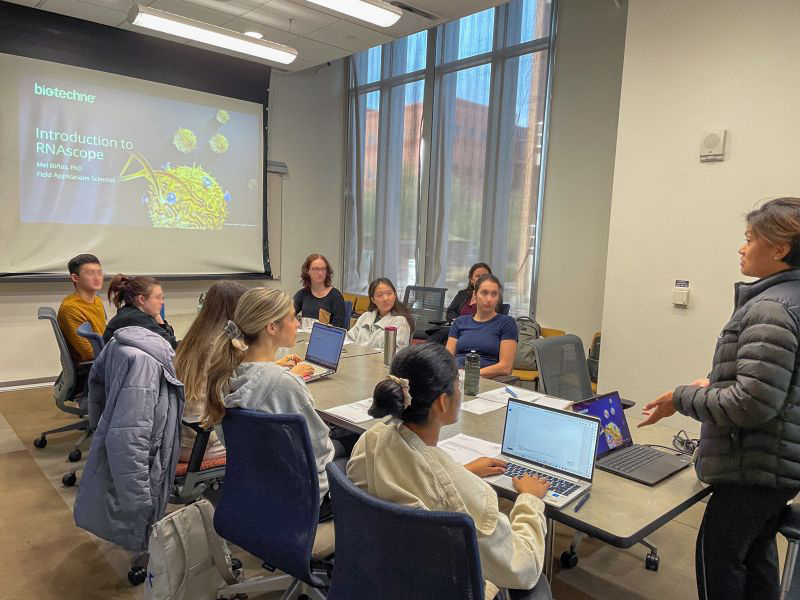
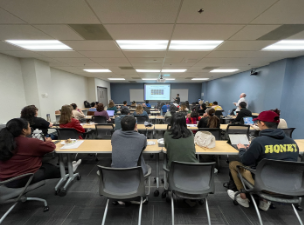
The Regen Med Core offers ASU scientists and students a variety of learning opportunities, including training on equipment and techniques from basic to advanced levels, technology demonstrations, hands-on workshops on innovative technologies, and seminars covering both fundamental concepts and the latest industry developments.
Regenerative Medicine Workshops and Seminars.
Regen Med Core Community Outreach
Dr. Page Baluch, Assistant Director of the Biosciences Core, manages multiple facilities, conducts research and champions science education for the wider community and youth.
Dr. Baluch actively volunteers for editorial tasks for publications such as "Microscopy Today" and leads community outreach initiatives. She can often be found participating in Sun Devil Microscopy Club events. One example is the "Pattern Investigation with ASU Microscopy" booth she and Dr. Zerrin Uzum worked at a Phoenix Art Museum exhibition.
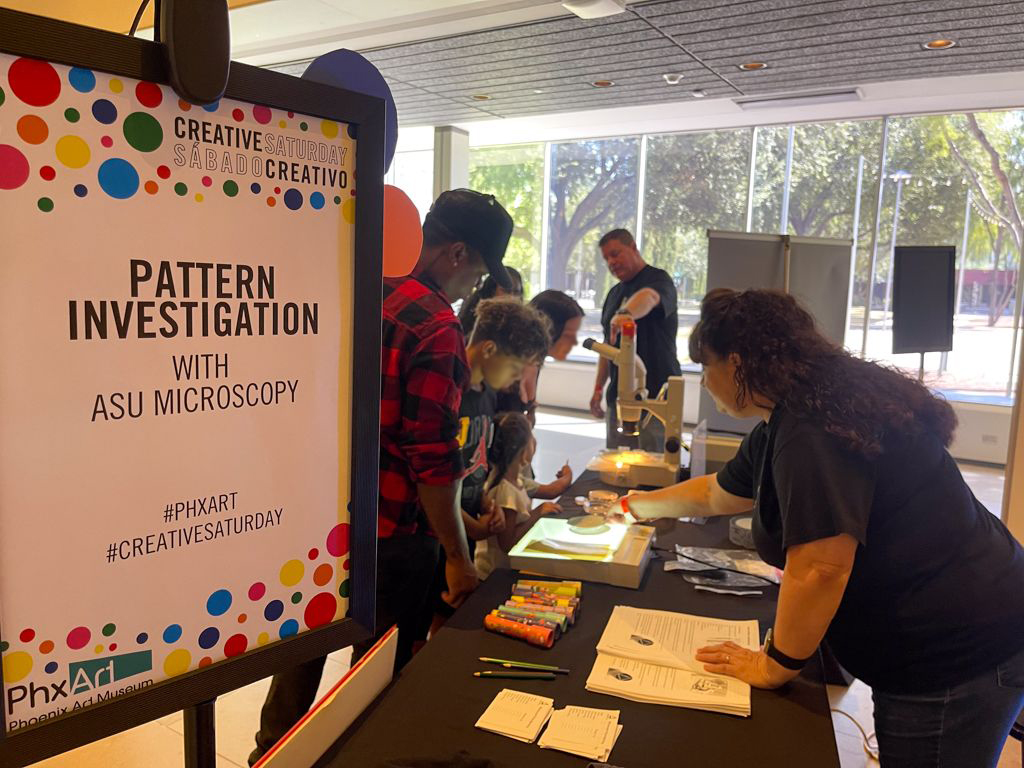
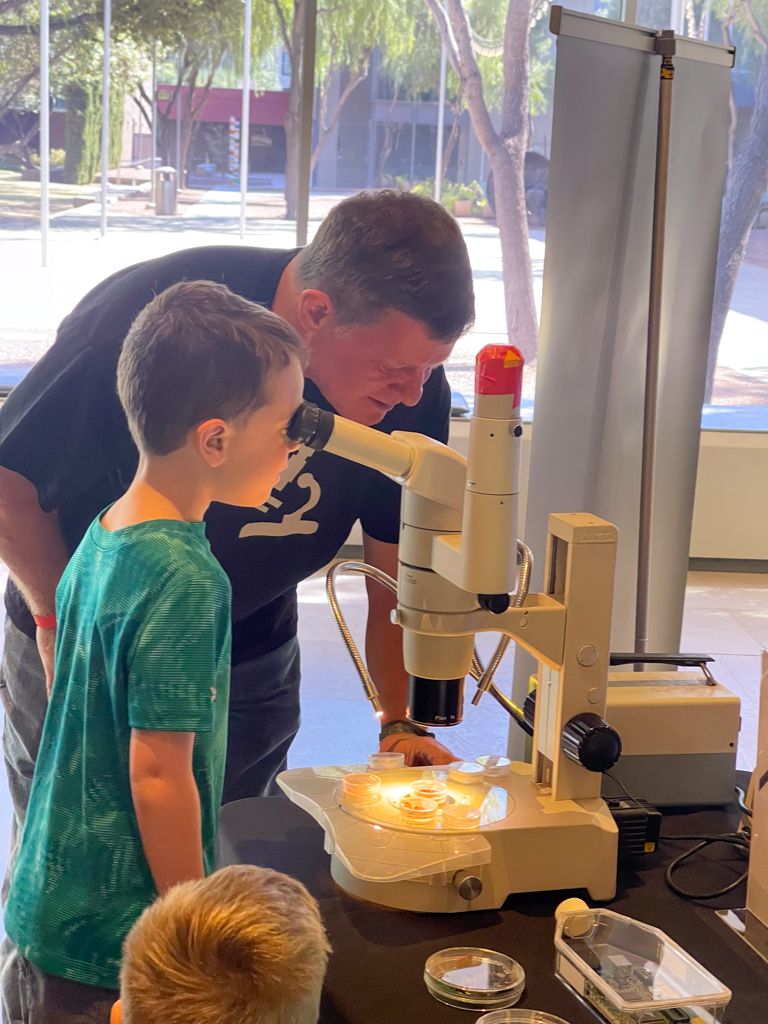

Publications
CytoDirect: A Nucleic Acid Nanodevice for Specific and Efficient Delivery of Functional Payloads to the Cytoplasm
This groundbreaking research utilized our Bioscience Core's Mass Spectrometry, Flow Cytometry and Advanced Light Microscopy facilities, showcasing their impact on global scientific advancements.
Abstract
CytoDirect is a DNA nanodevice that utilizes the programmability of DNA nanotechnology for efficient delivery directly into cancer cells, bypassing endo/lysosomal capture. This research underscores the effectiveness of affibody modifications, enhancing the capabilities of DNA nanostructures in targeted therapy and disease management.
Method
The study focuses on the design, construction, and analysis of CytoDirect, particularly its ability to target HER2-overexpressing SK-BR-3 breast cancer cells. It examines how CytoDirect is distributed within cells, investigates how it enters cells and explores its potential for delivering therapeutic oligonucleotides and small-molecule anticancer drugs.
Results
CytoDirect utilizes disulfide and HER2 affibody modifications on DNA origami for rapid cytosolic uptake and effective tumor penetration, significantly improving treatment in HER2-positive breast cancer. This method addresses the challenges of precise and effective drug delivery to deep tissues, offering a promising approach for enhanced therapy.
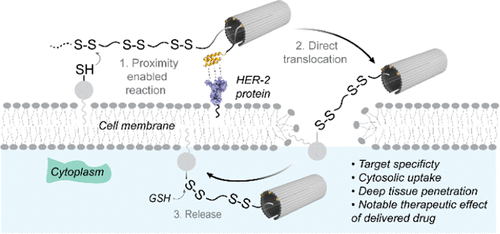
Delve into the researchers' findings.
Core Facilities News - January 2024 - AMPED Batteries Special Edition

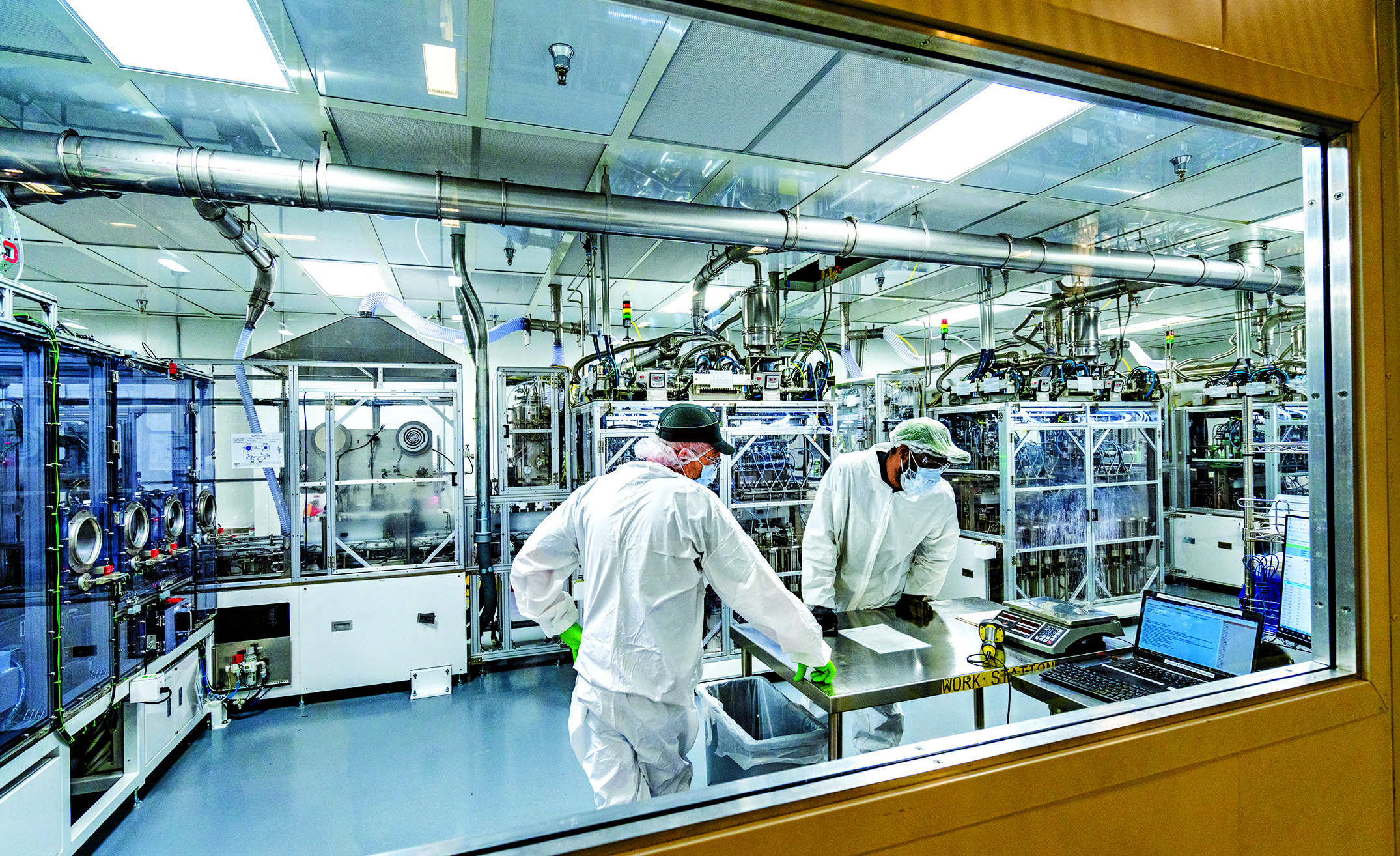
Welcome to the ASU Core Facilities Newsletter. We are ready to support all your research goals. Please follow our LinkedIn page for additional resources and community information.
Batteries
ASU is working to increase the power density of batteries while decreasing battery size through new materials and process and manufacturing techniques to improve the future of power storage. The ASU Core Research Facilities house numerous pieces of specialized equipment and expert staff that support battery research and development, from fabrication to testing.
Eyring Materials Center
EMC proudly supports the AMPED initiative, contributing to the acquisition of advanced technologies like Sigray, PrismaE SEM, CleanMill and air-sensitive XPS holders.
These enhancements, made possible through AMPED funding, highlight EMC's commitment to fostering innovation within our community.
EMC supports the AMPED STC batteries initiative by offering a diverse array of instrumentation.
STOE STADI P transmission X-ray diffractometer
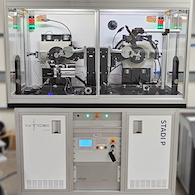
Measurements in operando during battery operation. It assesses crystallinity, identifies present phases and pair distribution functions.
X-ray Photoelectron Kratos Axis Supra+
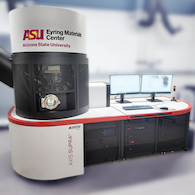
Provides surface chemistry insights with two air-sensitive sample options.
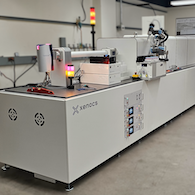
Equipped with air-sensitive sample holders, analyzes battery materials, revealing domain size, crystallography.
Rigaku SmartLab X-ray Diffractometer
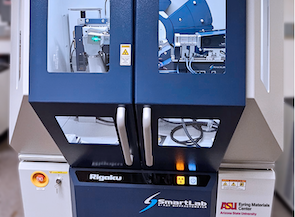
For samples that are less air-sensitive or suitable for analysis in air.

Uses a fingerprint technique to identify materials based on vibrations. Its sensitivity gives information on composition and strain.
Electron Microscopy
CleanMill ion beam polisher paired with the Clean connect transfer system ensures air-free sample transport from the ion polishing instrument to the new Prisma E SEM.
Prisma environmental SEM, installed in December 2023, will be available for general SEM imaging as well as imaging of samples loaded via the air free transport ensuring no surface change due to interaction with air.
TEM also offers multiple battery material analysis options, available at both ambient and cryogenic temperatures
How EMC supports materials science.
Advanced Electronics & Photonics
The Advanced Electronics & Photonics (AEP) Core Facility has several pieces of equipment that can be used in the characterization and processing of Batteries.
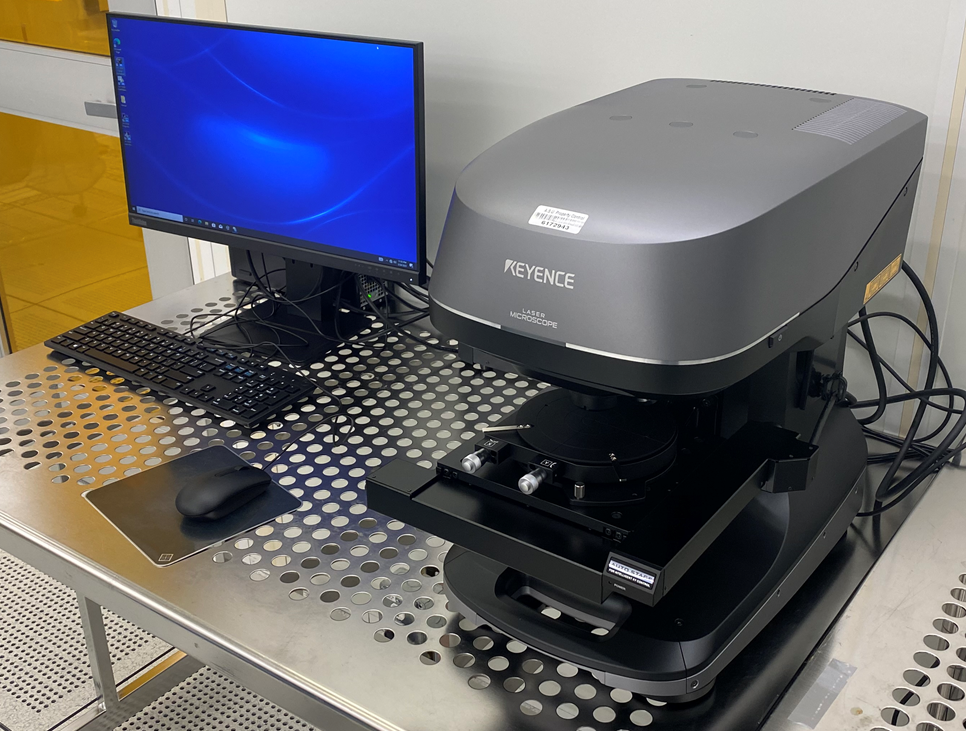 |
The Keyence VK-X3000 Laser Confocal Microscope performs nanometer-scale topology, surface mapping, profiling of sidewalls and has the capability to detect birefringence.
Battery Characterizing and Processing Equipment
Mettler Toledo Titration Equipment
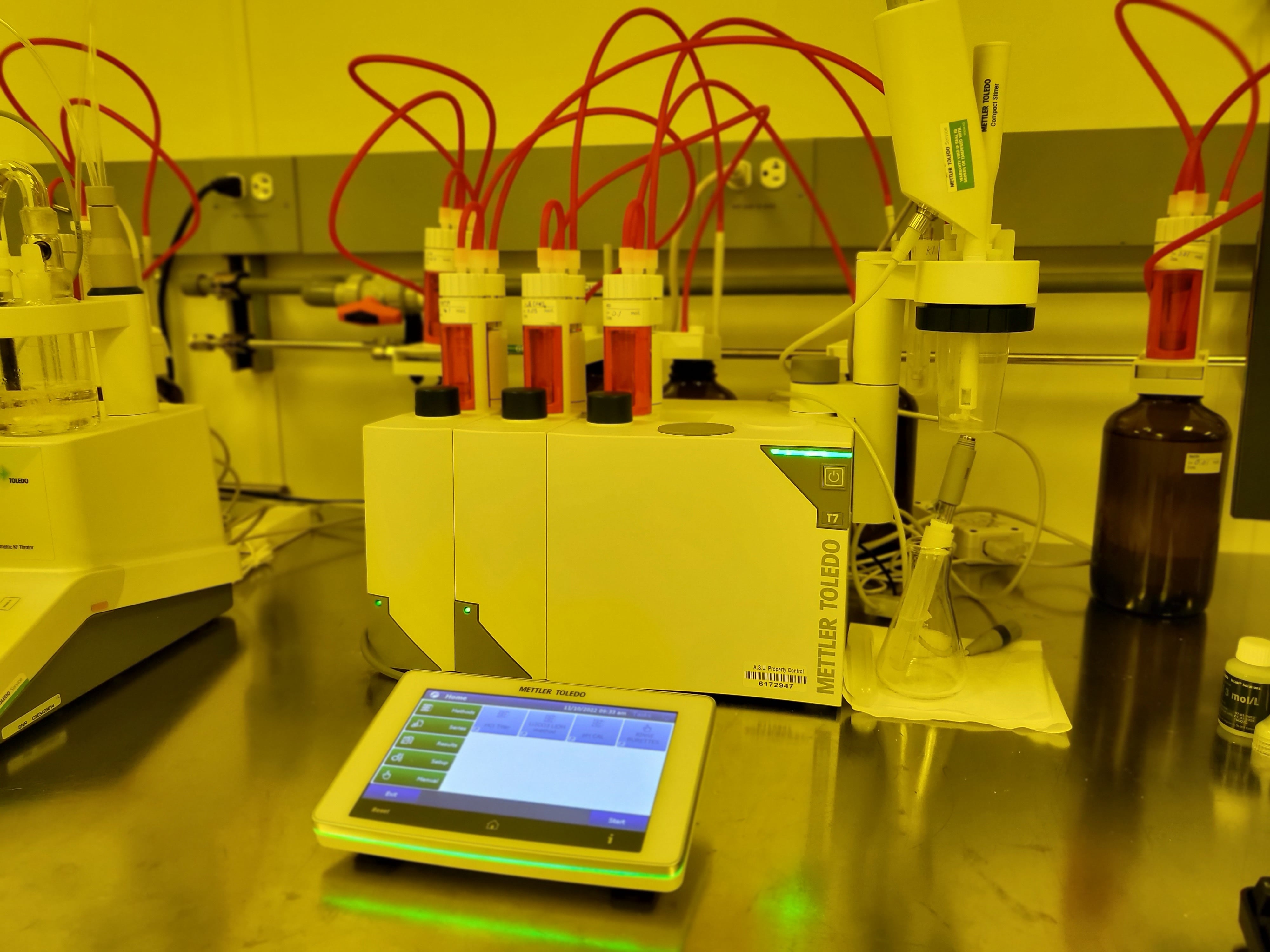
Determines the amount of a substance. The chemical reaction is monitored either by color change with a photometric sensor, a suitable pH, redox, conductivity or surfactant sensor.
Hioki RM2610 Electrode Resistance Tester

Consists of the RM9003 Press, RM2611 Meter and control software. The system isolates and quantifies composite layer and interface resistance in positive and negative electrode sheets used in lithium-ion-batteries.
Thinky ARE-310 Centrifugal Mixer
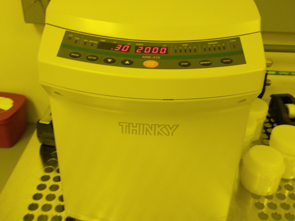
Equipment with battery device manufacturing capabilities
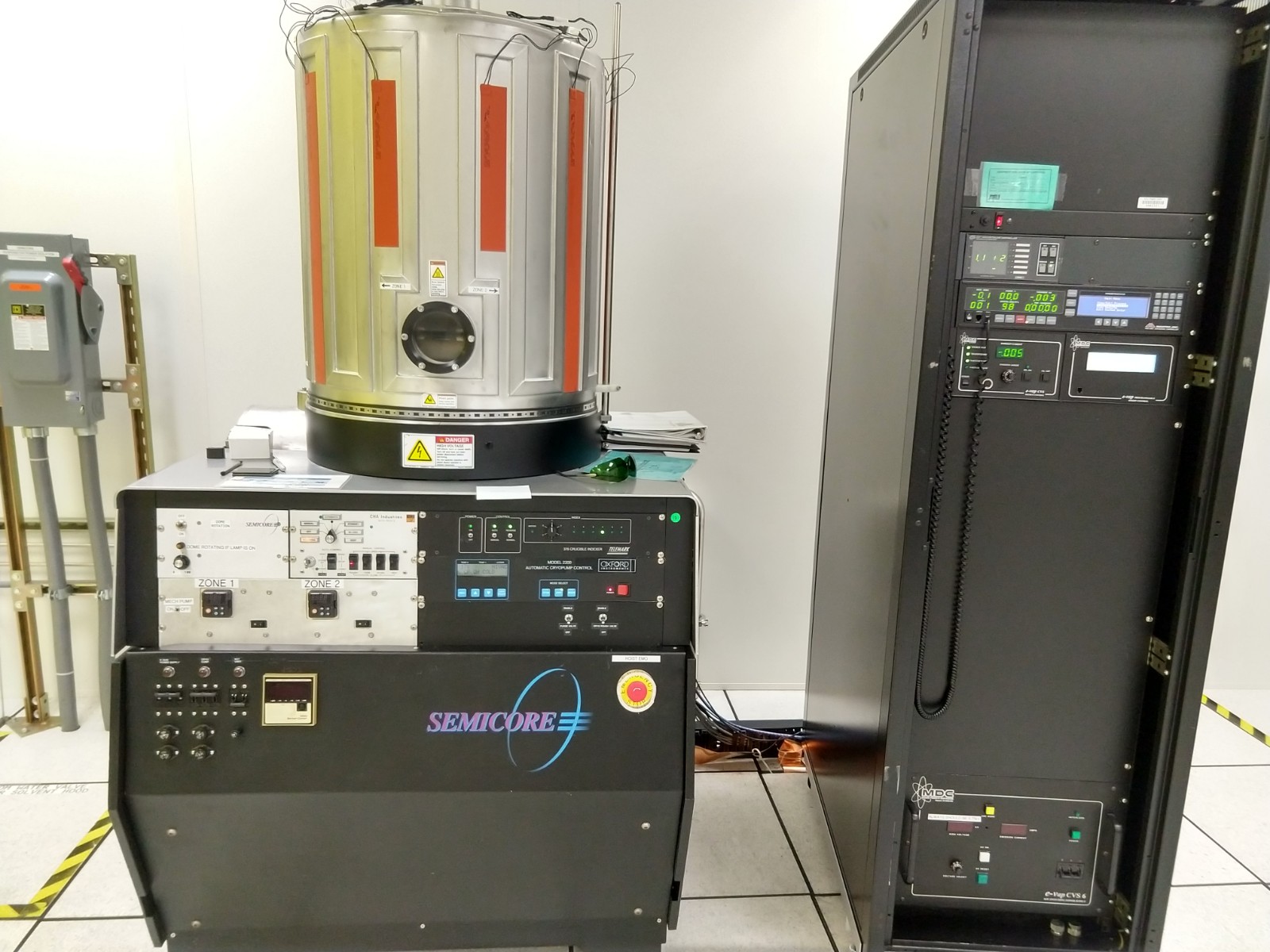
Dedicated to non-silicon processing with 4 evaporation pockets. No substrates pieces are being too small or too big given a wide range of materials to choose from.
Angstrom Glovebox Evaporation Deposition
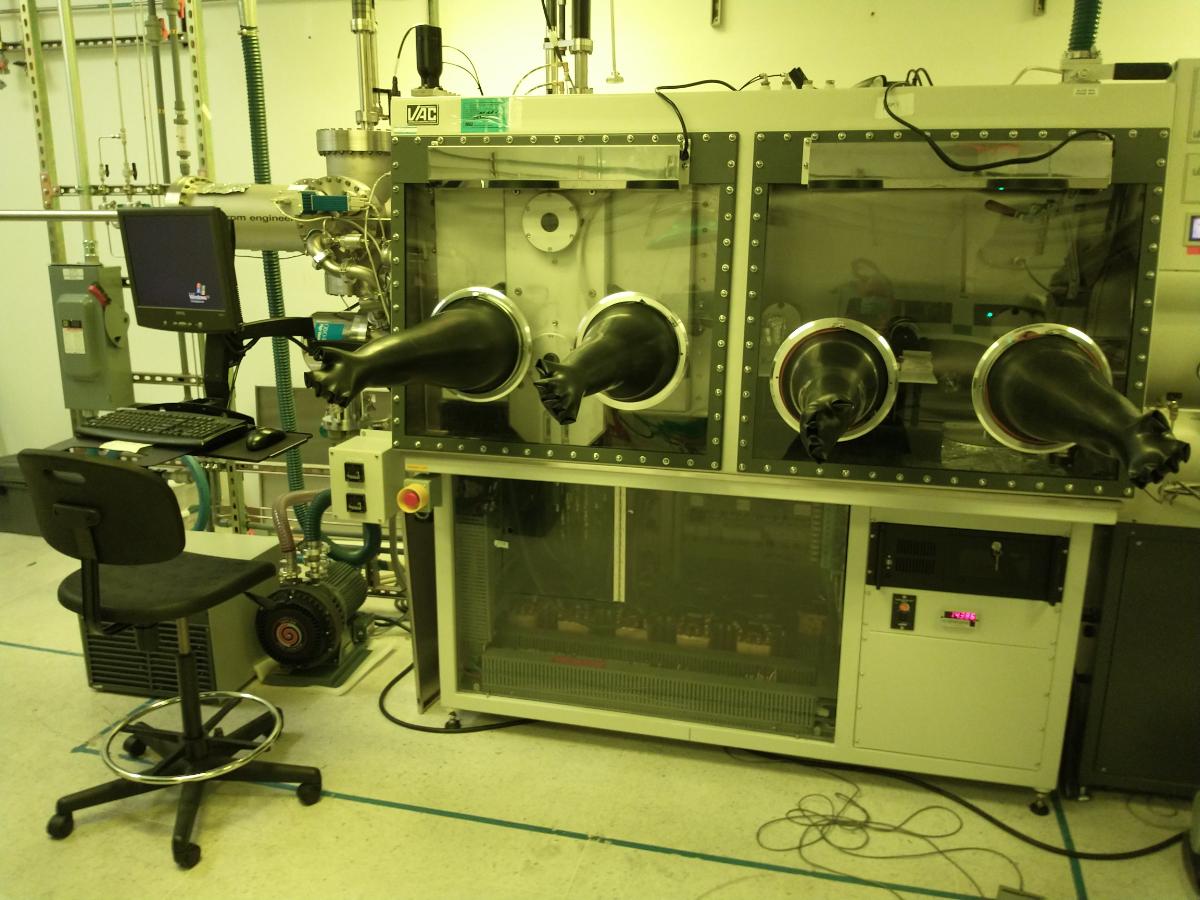
Housed in a nitrogen glovebox, the spin coater is employed for perovskite spin processing and the evaporation chamber, features 11 pockets for metal and organic sources.

A vacuum system which uses argon and oxygen ionized in a plasma to impact a metal or ceramic “target”. MRC can be fixtures to fit any currently available solar cell substrate.
Metrology equipment for wide band gap and power devices
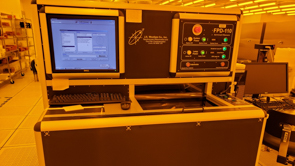
Woollam Ellipsometer M2000 measures the change in the polarization state of light as it is reflected off the surface of the film under analysis and its substrate.
TA Instruments HR-20 Rheometero: Measures viscosity of a mixture. Used on battery electrolyte and electrode mixtures to verify run-to-run consistency.
Optical characterization equipment: Flexus stress gauge, Thermo Nicolet 6700 FTIR, RPM-2000 Photoluminescence.
Physical characterization equipment for measuring surface roughness or topology: Park XE-150 AFM and Tencor P-16 Profilometer.
How AEP supports battery and microelectronics R&D
Solar Fab
The Solar Fab Core is nearing completion of the installation and initial operation of two Atomic Layer Deposition (ALD) Systems. ALD is a technique used to accurately coat substrates with thin films through a controlled, sequential exposure to various precursor materials.
ALD will be instrumental in improvement of Battery interface stability, necessary to enable ultra fast charging for both Li-ion and solid-state batteries.
Veeco Fiji ALD

A plasma and thermal ALD compatible with 200 mm semiconductor substrates.
Veeco Savannah ALD

A thermal ALD system compatible with 300 mm semiconductor substrates.
How Solar Fab helps ASU advance clean energy research.
News
Arizona Commerce Authority will allocate the funding to purchase equipment to enhance the capabilities of ASU’s MacroTechnology Works (MTW) in Tempe

ASU plans to expand advanced packaging and GaN research to additional capabilities that support 6G, IoT, machine learning and more. The expansion will also include workforce development initiatives such as internships and university joint research and next-gen GaN research development for 6G in partnership with NXP Semiconductors in Chandler.
Explore ASU's manufacturing expansion plans.
Publications
A hydrogen-enriched layer in the topmost outer core sourced from deeply subducted water
We're proud to acknowledge that some of this groundbreaking research utilized resources from Arizona State University's METAL Core, showcasing the impact of our facilities on global scientific advancements.
Abstract
The researchers' experiments reveal that water interacting with Fe–Si alloys under core–mantle boundary conditions produces SiO2 and FeHx, potentially explaining the distinct properties of the Eʹ layer and indicating a long-term chemical exchange between Earth's core and mantle.
Method
The Earth's outer core is 10% less dense than pure iron-nickel alloy, suggesting the presence of lighter elements. Our study focuses on a new hydrogen-silicon exchange process at the core-mantle boundary (CMB), shedding light on the Eʹ layer's formation and the development of chemical heterogeneities.
Results
Water from minerals reacts with Fe–Si, hydrogenating iron and oxidizing silicon into silica, which may transform ferropericlase into bridgmanite or post-perovskite.

Delve into the researchers' findings
New Workshop! Beyond Text: Harnessing the Potential of Large Language Models for Innovation
Unlock the Power of Language with ASU Research Computing!
Dive into the fascinating world of Large Language Models (LLMs) – the backbone of generative artificial intelligence. These models, like Falcon, LlaMa, Alpaca, MPT, and more, operate on the cutting edge, responding to text queries based on billions of trained weight parameters. ASU Research Computing has downloaded several open-source large language models that can be loaded and used for inference and fine-tuning on the Sol supercomputer.
Join ASU Research Computing for this interactive tutorial on how to use Jupyter Notebooks to load these models and also supplement with frameworks from LangChain and the Hugging Face Hub.
In preparation for this event, all attendees are encouraged to obtain an account to access the supercomputer and other ASU Research Computing resources if they do not already have one. Learn about other Research Computing workshop offerings at https://links.asu.edu/learn.
Date: December 11, 2023
Time: 11:00 to 11:30AM
In-person or Virtual: Virtual
Core Facilities News - December 2023 - Eyring Materials Center New Equipment

Welcome to the ASU Core Facilities Newsletter. We are ready to support all your research goals. Please follow our LinkedIn page for additional resources and community information.
Eyring Materials Center (EMC) New Equipment
The (a href="https://cores.research.asu.edu/materials/about" target="_blank">Eyring Materials Center has significantly expanded its capabilities, introducing new instruments since the summer. Starting with the installation of the Rigaku SmartLab high-resolution diffractometer in June. Following this, the Goldwater Center for Research and Engineering, room B10 (GWC-B10) welcomed four new instruments alongside the recently acquired Kratos Axis Supra+ XPS.
These additions enhance our ability to analyze material properties from the surface to the bulk, on scales from the atomic to the micron, both ex-situ and in-situ.
These Researchers Possess Specialized Expertise in the Operation of the Specific Machines under their Purview
Please contact us for more Information

Oversees the QuantumLeap-H2000, STADI P Dual Transmission XRD and the Xenocs Xeuss 3.0.
Oversees the Kratos Axis Supra+.
Oversees the Talos F200i TEM, Prisma E SEM and the CleanMill.
Oversees the ThermoFisher Scientific Neoma.
Rigaku SmartLab X-ray Diffractometer
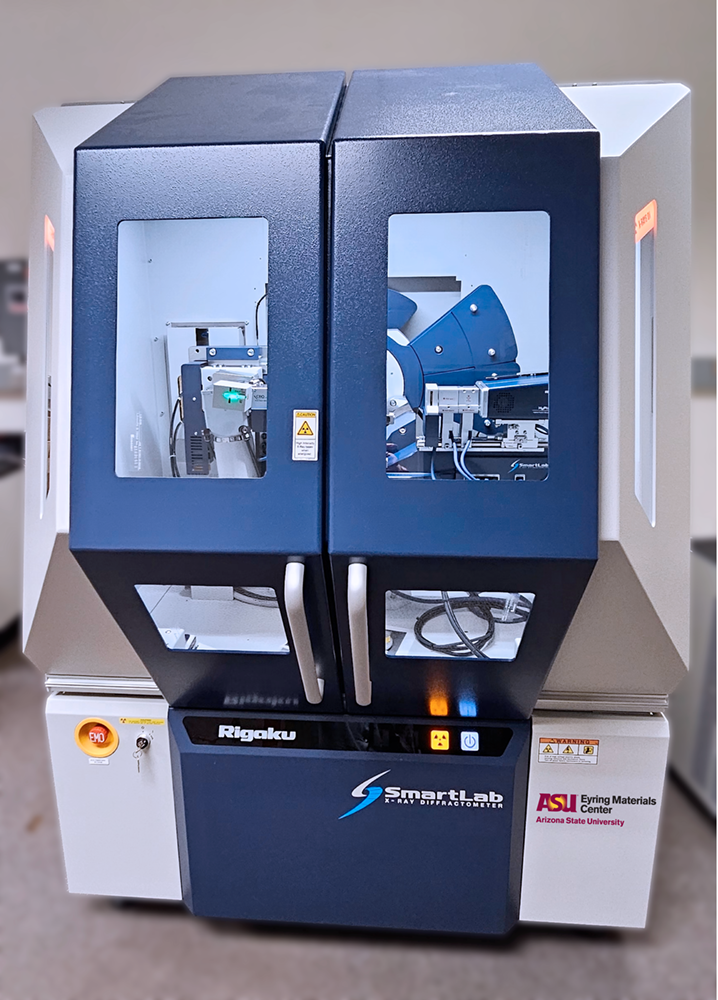
Available Now
The Rigaku SmartLab XRD is a user friendly and versatile X-ray diffractometer able to analyze both epitaxial and polycrystalline thin films, bulk samples and powders. From standard diffraction, to reciprocal space maps, 2D patterns and pole figures it can inform a wide range of scientific questions. Its in plan diffraction arm also allows us to access a larger part of the reciprocal space challenging to access in most other diffractometers.
Xenocs Xeuss 3.0 Small Angle X-ray Scattering
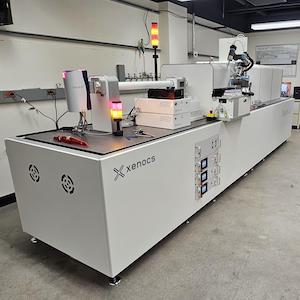
Available Now
The Xeuss 3.0 can perform Small- or Wide-Angle X-ray Scattering (SAXS/WAXS) measurements in transmission or in Grazing Incidence (GI-SAXS/WAXS) geometry. For larger feature sizes, the system also offer the ultra-SAXS option. All combined the instrument provides comprehensive structural information over a wide range of length-scales. The heating, cooling, tensile, shear and humidity stages provide unique capabilities on in situ and in operando studies.
STOE STADI P Dual Transmission X-ray Diffractometer
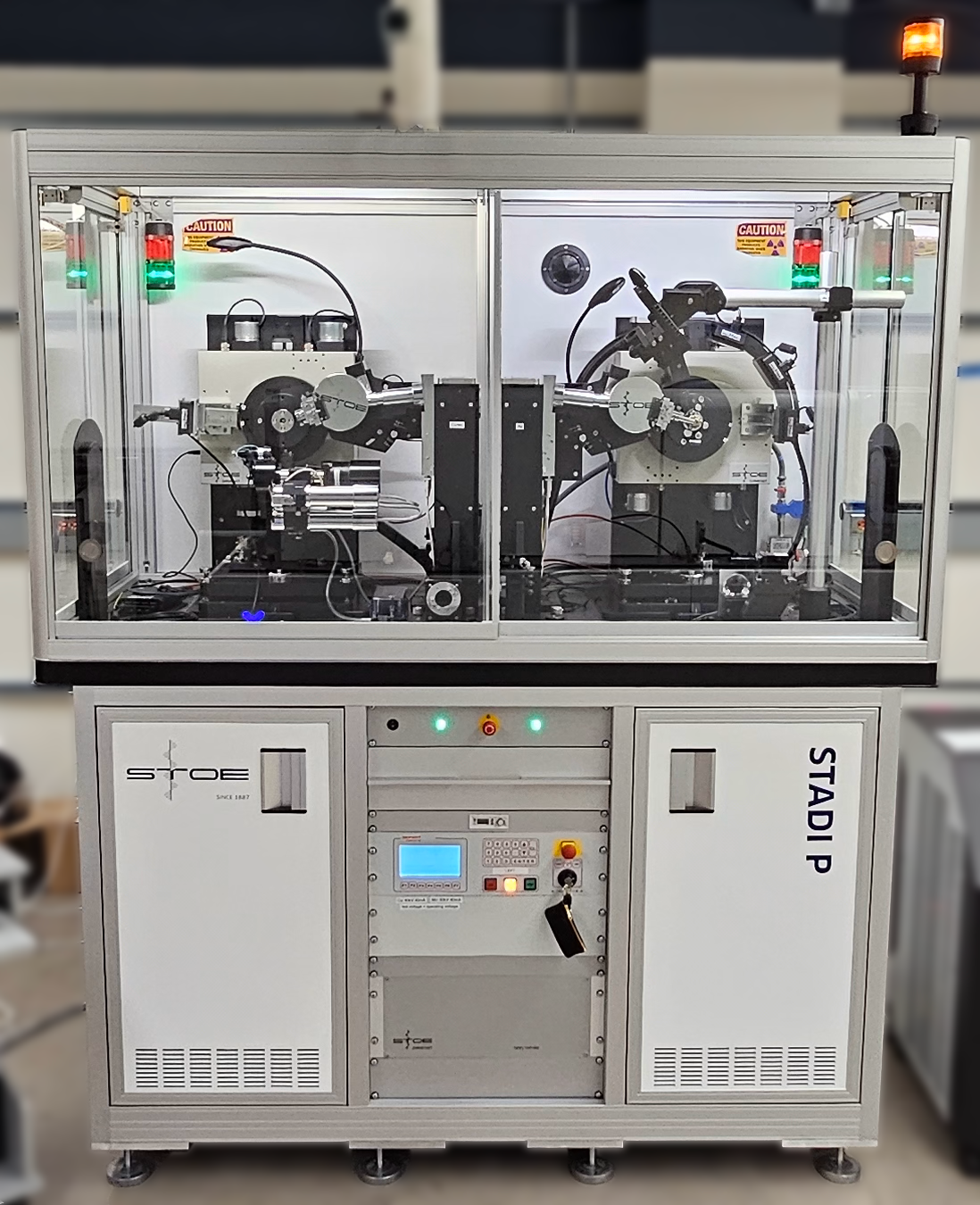
Available Now
The STADI P provides pure K⍺1 radiation using Mo, Cu and Ag anodes in transmission-/Debye-Scherrer mode for analyzing material’s crystalline structure through diffraction patterns and amorphous structure through pair distribution function (PDF) calculations. Additionally, its in situ heating/cooling and in operando charge/discharge.
SigRay QuantumLeap-H2000 X-ray Absorption Spectroscopy
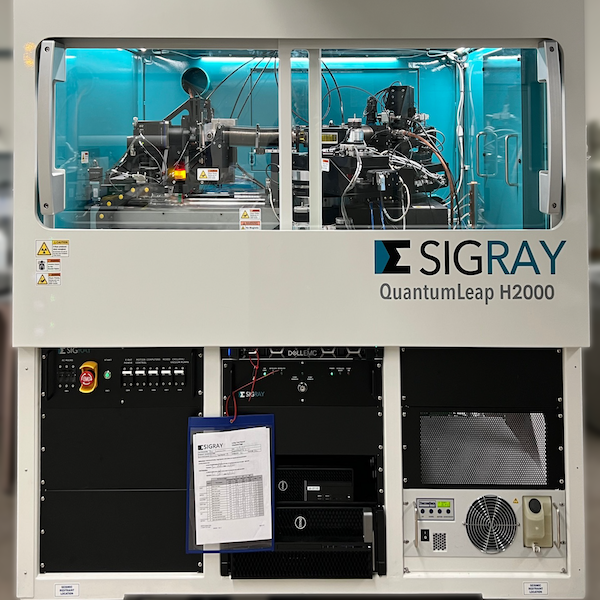
Available Soon
The QuantumLeap-H2000 synchrotron-like XAS has capabilities with sub-eV resolution, allowing measurements in transmission and fluorescence modes across a broad energy range. The system, featuring heating and electrochemical cells, enables examination of element-specific short-range structural and coordination environments. Researchers can investigate the oxidation state, including in situ structural changes of electrodes.
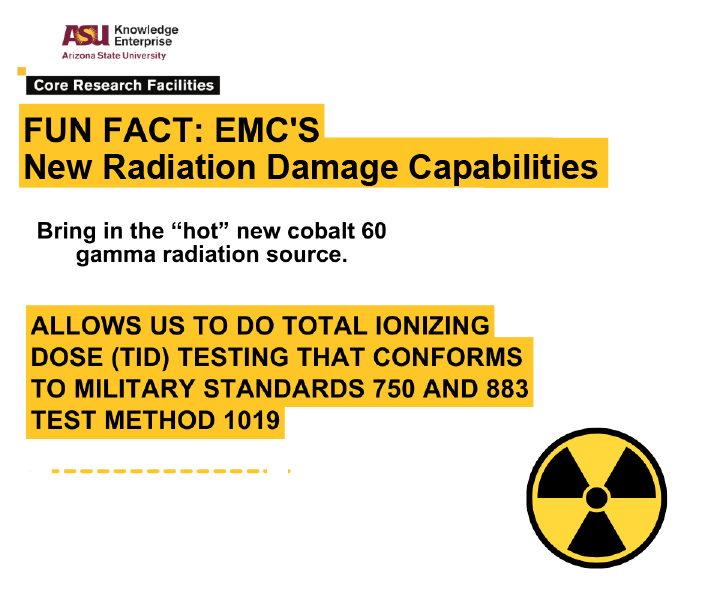
Enhanced Capabilities in Electron Microscopy Labs with Upgraded ThermoFisher Equipment
ThermoFisher Scientific Talos F200i TEM

Available January 2024
The Talos F200i (S)TEM features Dual 100 mm² EDS detectors for simultaneous chemical analysis, a Ceta Camera for large field of view and fast imaging and a MerlinEM Direct Electron Detector for rapid readout and improved signal-to-noise ratio—ideal for applications like 4D STEM and TEM dynamic imaging.
ThermoFisher Scientific CleanMill
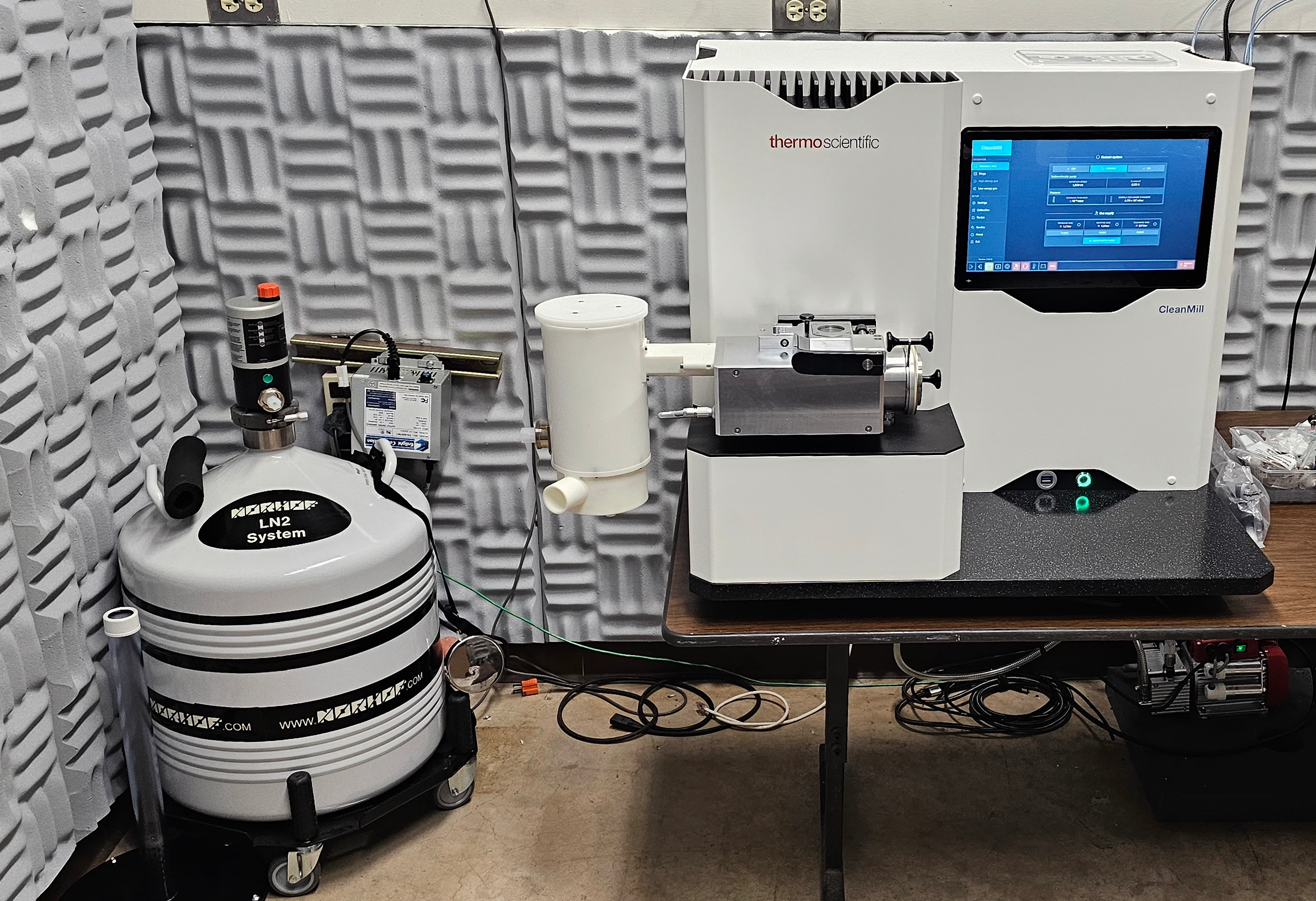
Available January 2024
The CleanMill provides a complete ion polishing solution for SEM applications. Researchers will be able to get scratch-free surfaces in their materials needed for EBSD, EDS and WDS applications. Together with the CleanConnect System, it will allow to transfer air sensitive samples in an inert gas atmosphere to the Prisma E SEM.
ThermoFisher Scientific Prisma E SEM
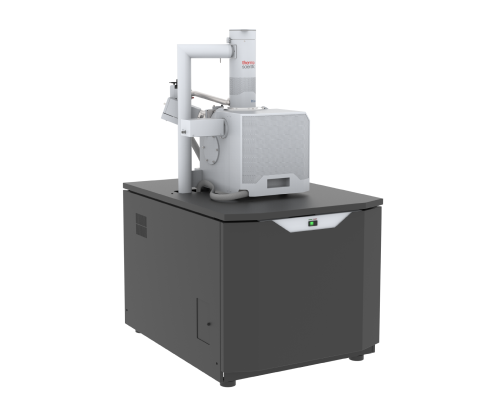
Available Spring 2024
Thanks to its low vacuum and ESEM capability, the New Prisma E SEM will allow researchers to acquire charge-free imaging and analysis of non-conductive and hydrated specimens. Together with the ChemiSEM Technology that combines conventional SE or BSE imaging with live elemental analysis,which is no longer limited to grayscale. The new capability will also be compatible with the clean connect to load samples from our CleanMill without any air exposure.
ThermoFisher Scientific Neoma
EMC / METAL is excited for the best holiday gift ever... delivery of a brand-new Neoma Multi-collector Inductively Coupled Plasma Mass Spectrometer (MC-ICP-MS)
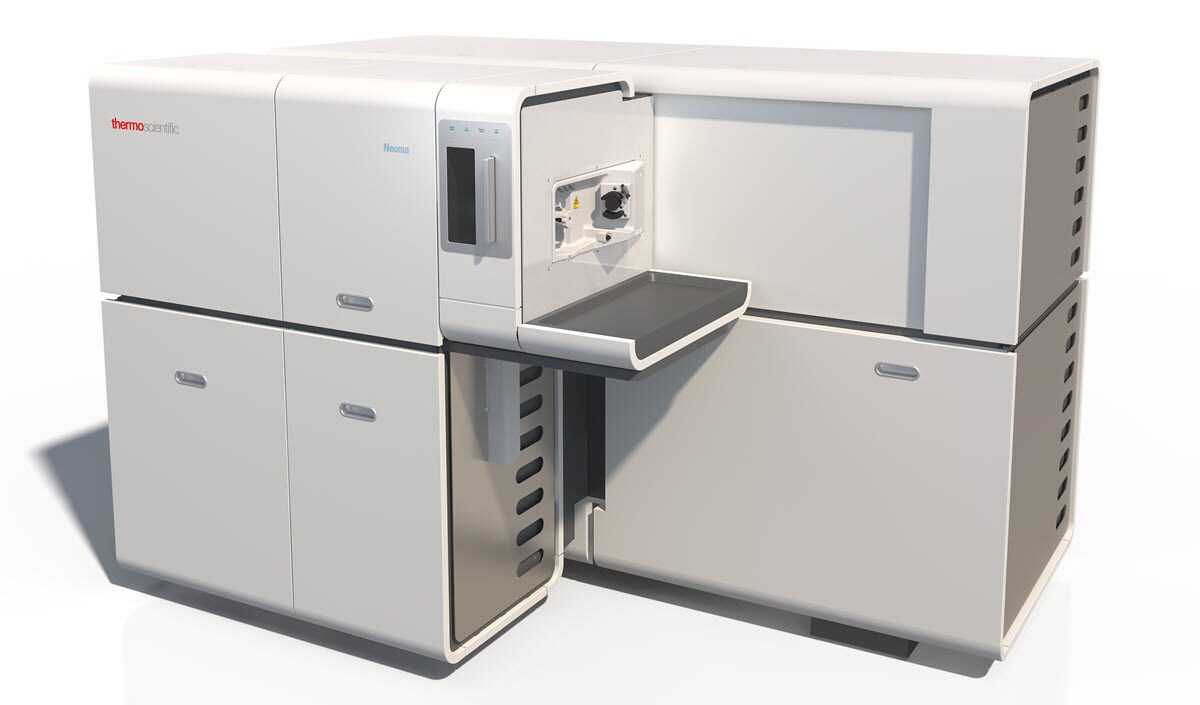
Arrival is expected December 21st, installation and validation will occur in early 2024.
The ThermoFisher Scientific Neoma MC-ICP-MS, This instrument measures isotope ratios with outstanding sensitivity and precision surpassing the "Neptune" instrument that has served projects in anthropology, biomedical, engineering and geochemistry applications for nearly two decades!
"The new Neoma MC-ICP-MS will enable us to turbo-charge our research into how Earth became a habitable world-and the possibility that there could be others worlds out there like our own" said School Of Earth and Space Exploration and School of Molecular Sciences professor Dr. Ariel Anbar.
News
Nurturing and Amplifying the Achievement of Prof. Sule Ozev, Recipient of the Joseph C. Palais Distinguished Faculty Scholar for the Academic Year 2023 - 2024 Award
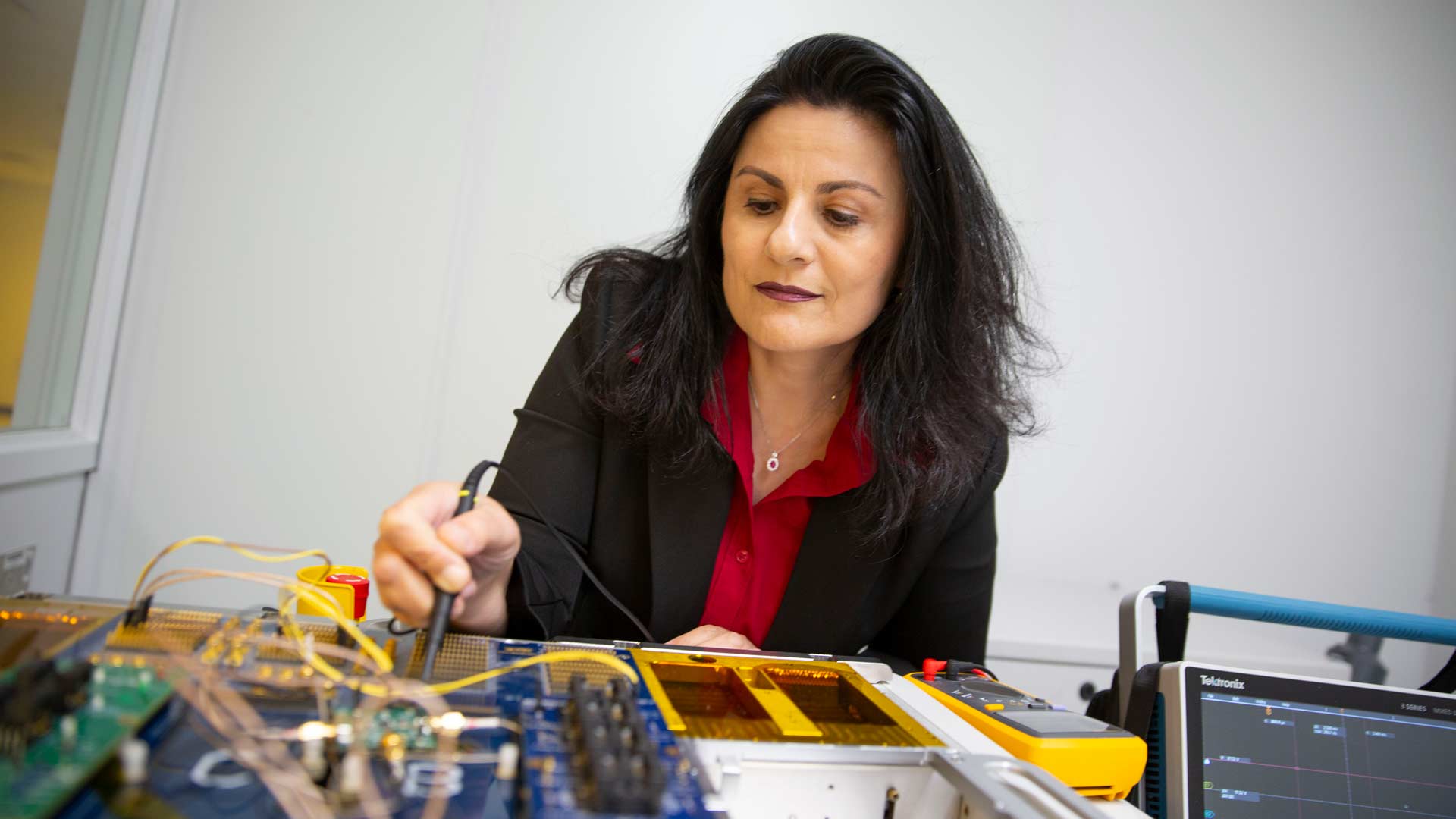
Ozev's diverse accomplishments in research and teaching, combined with her unwavering dedication to student mentorship by utilizing clean room space at the ASU Core Research Facilities Advanced Electronics and Photonics Core, have established her as an outstanding faculty member.
Read about Ozev's contributions
Publications
Tuning Film Stresses for Open-Air Processing of Stable Metal Halide Perovskites
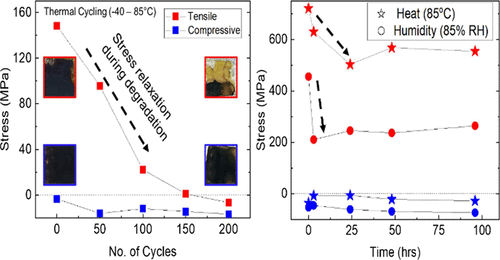
Research highlights the challenges faced by metal halide perovskite semiconductors in solar cell technology. These materials offer promise with defect tolerance, extended charge carrier lifetimes and carrier mobility. Yet, they also grapple with environmental and mechanical instabilities, particularly mechanical film stress. This stress impacts perovskite solar cell performance, leading to structural instability, increased defect density, reduced carrier mobility, ionic mobility and an elevated risk of cracking, affecting cell efficiency.
Authors: Muneeza Ahmad, Carsen Cartledge, Gabriel McAndrews, Antonella Giuri, Michael D. McGehee, Aurora Rizzo and Nicholas Rolston
Read about perovskite solar cell performance.
Help us advance your research with BioRender!
Unleash the power of visual communication in your research with BioRender — the ultimate tool for crafting scientific graphics for manuscripts, reports and presentations. Our IT group is exploring the possibility of acquiring an institutional license, and your support could tip the scales! Join the initiative by participating in our brief survey. Your input is vital in bringing this innovative resource to our institution. ASU Faculty and Staff Researchers, make your voice heard and help us enhance our research visualization capabilities.
Sign up now and be part of the change!
Core Facilities News - November 2023 - Histology Core Highlight


Welcome to the ASU Core Facilities Newsletter. We are ready to support all your research goals. Please follow our LinkedIn page for additional resources and community information.
Highlight: Histology
Histology is the study of the microanatomy of cells, tissues and organs as seen through a microscope. It examines the correlation between structure and function.
Histology examines tissue organization from cellular to organ levels. Removed tissue is processed to maintain cell structure, thinly sliced using a microtome or cryostat and placed on glass slides. Staining with dyes enhances contrast, allowing detailed study under an optical microscope.
Introducing our New Histology Core

The new Histology Core automates almost every process used in histology, from the initial tissue processing (including fixation, dehydration, clearing and paraffin infiltration) to paraffin embedding. The Histology Core also offers cassette and slide labeling and slide staining. Automation ensures that results will be reliable, consistent and reproducible.
A new microtome and cryostat have been installed to ensure precise and consistent sections of tissue.
Histology Equipment
Leica HistoCore PEARL Automated Tissue Processor
The HistoCore PEARL automatically prepares tissue samples for laboratory testing by fixing, dehydrating, clearing and infiltrating them with paraffin. This fully enclosed tissue processor offers optimized fume protection for safe and reliable processing with up to 200 cassettes per run capacity. Pre-validated processing protocols can be adjusted to fit the unique needs of each individual tissue or specimen type.
This tissue processor is an asset to ASU research since it can replace and improve the results of manual processing due to the automated processors ability to provide consistent and reproducible results with a faster turnaround time.
Leica HistoCore Arcadia Embedding Center
Composed of the Arcadia H heated embedding workstation and the Arcadia C cold plate allows for simple operation and precise control; resulting in a smooth workflow, reliability and speed of your embedding work.
The HistoCore Arcadia C is a cold plate holding up to 65 cassettes on its large working surface. Cooling efficiency is important, so the cold plate was designed with an environment adaptive control module to make sure the operating temperature is stabilized at -6°C.
The HistoCore Arcadia Embedding Center is an asset to ASU research that increases the reliability and speed of the embedding process, resulting in consistent and reproducible results.
Leica ST5010 Autostainer XL

This automated slide stainer accommodates up to 11 racks of 30 slides each. The ability to store and execute 15 different user-defined staining protocols provides flexibility for various procedures. Used for Hematoxylin and Eosin staining, the Leica Autostainer XL aids in sample visualization and morphological analysis.
Leica IP C Cassette Printer

The IP C prints on tissue cassettes, offering features like barcode printing for automated tracking and traceability. Its robust ink maintains the legibility of imprints throughout histological processing. The printer is efficient, capable of printing 15 cassettes per minute in batch mode and individual cassettes in just 10 seconds each.
Leica Perma S Slide Printer
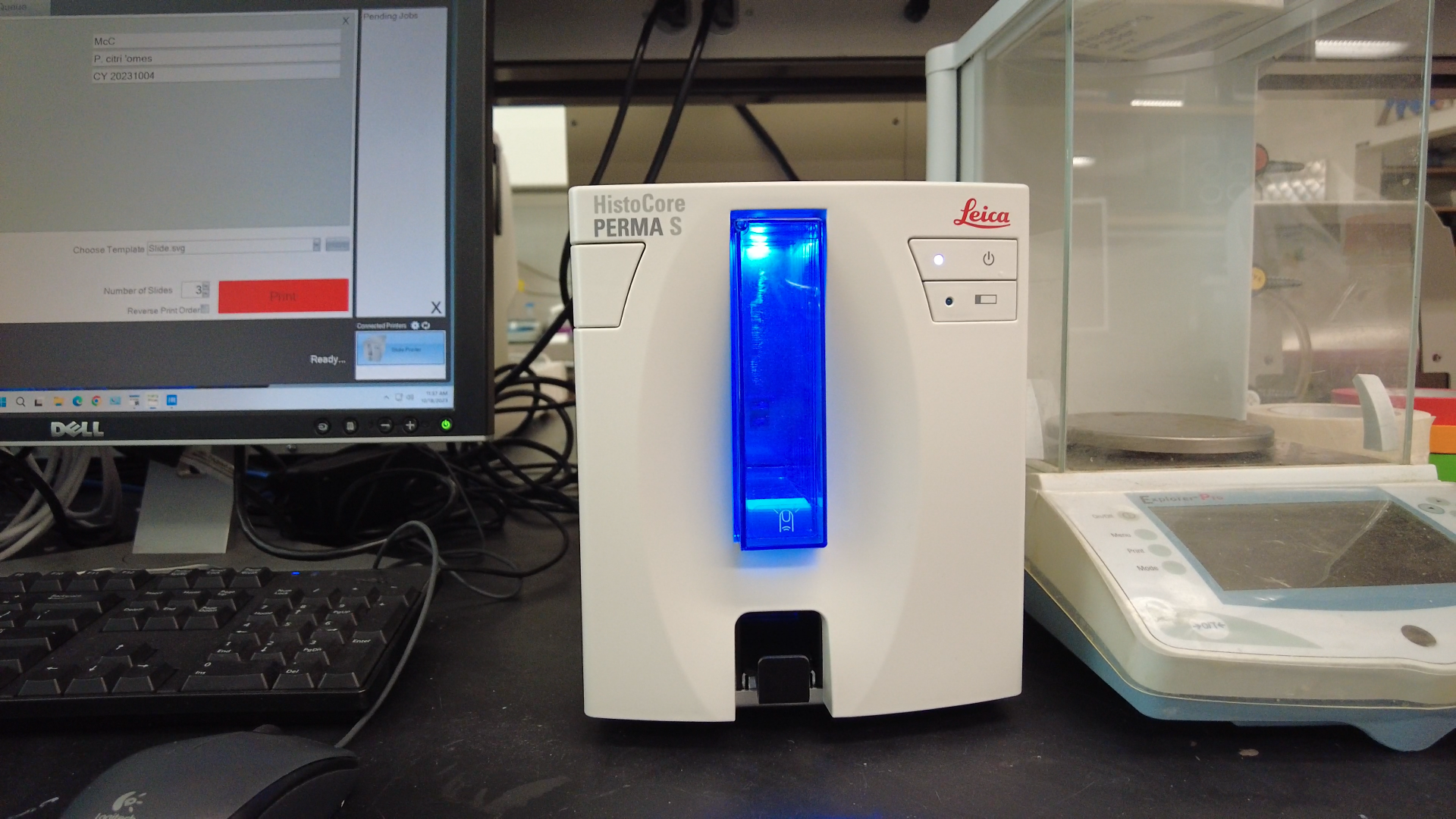
The sharp printing feature of the PERMA S significantly improves slide readability and helps reduce specimen misidentification. This slide printer enables individual slide printing at any microtome workstation. It also includes a 100-slide cartridge, facilitating swift and effortless replacement of slides.
News
Core Research Facilities proudly welcomed a remarkable addition: The Sigray QuantumLeap H2000 X-ray absorption spectroscopy equipment
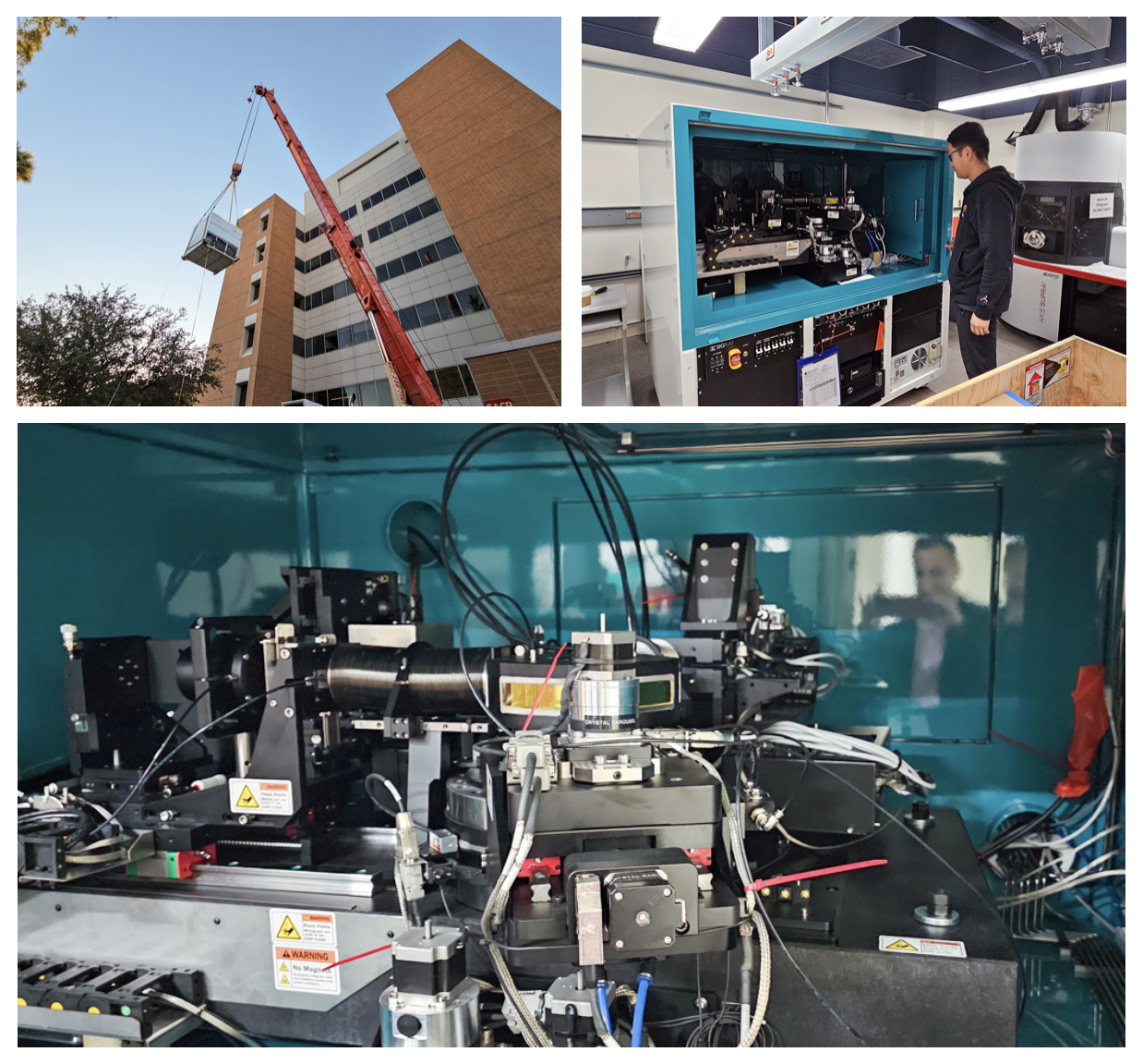
Funded by the New Economy Initiative: Advanced Materials, Processes and Energy Devices (AMPED) Science and Technology Center (STC) with Professor Mariana Bertoni as the lead researcher.
View the installation photos here!
Publications
De-novno whole genome assembly of the orange jewelweed, Impatiens capensis Meerb. (Balsaminaceae) using nanopore long-read sequencing

Abstract
Researchers study the Balsaminaceae family, comprising two genera: Impatiens, with over 1,000 species, and Hydrocera, limited to the single species H. triflora. While Impatiens species are found across the Old World and North America, H. triflora is restricted to wetlands in South India, Sri Lanka and Southeast Asia.
Method
Plant tissue samples from Missouri were sent to Dovetail Genomics in California for DNA extraction and sequencing. The MinION device generated 3,311,362 sequencing reads, now accessible on GenBank in a public database.
Results
Researchers employed nanopore long-read sequencing for a high-quality Impatiens capensis genome. This supports a database for studying species diversity and evolution in Impatiens and Hydrocera, and aids in developing disease-resistant ornamental Impatiens.
Authors: Sudhindra R. Gadagkar, J. Antonio Baeza, Kristina Buss, Nate Johnson
Read the full research article.

